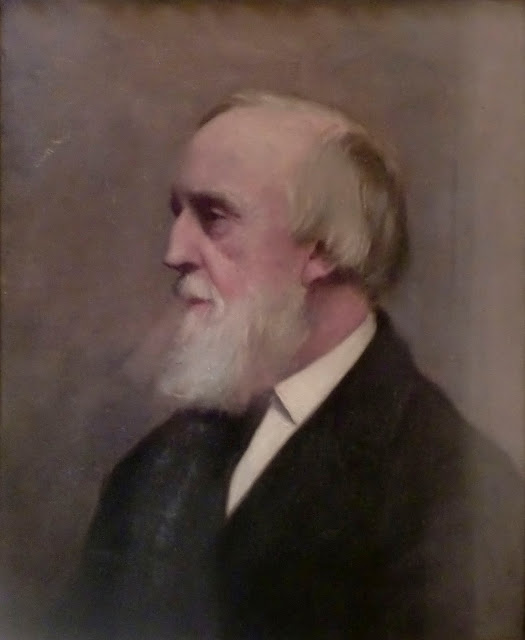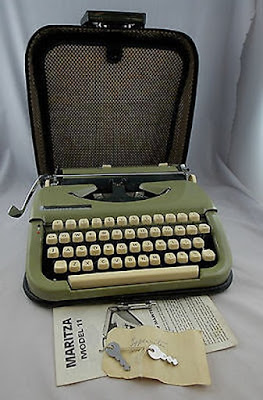Sydney typewriter collector Richard Amery, a retired politician, already owns what is almost
certainly the most complete set of Imperial portables to be
found anyway. Yet, even while fairly secure in that knowledge, Richard refuses to sit back and rest on his laurels. He is constantly searching for additions.
Richard Amery recently dragged out a small range
of his Japanese-made Imperial portables.
This latest one in Richard's collection is very clearly a Bulgarian-made Maritsa 11 (which started life in Germany as a Princess). Variations (in label only) sold in the United States included the Bundy and the Montgomery Ward 101, and in Australia the Pacific 11.
One of the IGC 75s offered for sale in England came with a Maritsa 11 manual.
A Google search suggests the IGC 75 was only sold in Britain (where one or two have popped up on Worthpoint). I can't find reference to this label anywhere else. Wilf Beeching's Century of the Typewriter, first published in 1974 and updated in 1990, doesn't mention it (but then it doesn't have any mention of Maritsa, either).
The cheap and very nasty relabelling (even worse than Pacific's, and that's really saying something) shows it was sold after the Litton Industries takeover of Imperial in 1967. However, where the Maritsa-relabelled IGC 75 fits in among the Imperials made for Litton by Messa in Portugal and those made for Litton by Silver-Seiko and Nakajima in Japan is difficult to say. (Nakajima did make a Good Companion, but with no model number.)

One clue comes from Britain's so-called "Mr Typewriter", Tom Lucas, who in a comment to my blog post about German Imperials (posted almost exactly a year ago), said, "There was an Imperial 95 too! Made in Bulgaria and actually a
Hermes 3000 in an office-machine sized plastic casing. I have only ever seen
one of those - new in about 1985." A mid-80s date for the IGC 75 seems feasible, too, though rather late in the piece for manual portables. Yet we also know that Robotron made a late-model Imperial 34 semi-portable under the same Soviet Union überarch grouping that embraced Maritsa.

According to Milton Moskowitz's June 1975 piece in the Los Angeles Times (see above) about Litton's battles with the US Federal Trade Commission over its attempted 1969 takeover of Triumph-Adler, "In 10 years [1985] there may be no other typewriter manufacturers left [for Litton] to acquire." Blocked by the FTC from taking over more typewriter companies until 1985, and rather than trying to buy out any which did remain in 1985, Litton may well have had to resort to existing companies for no more than supplies of portables to relabel. (It wouldn't have been able to take over the Soviet Bloc Maritsa, for obvious Cold War reasons.) After all, that's not a lot different to what it did in Japan. But whether Maritsa was still making the model 11 as late as 1985 is questionable. On the other hand, don't forget Litton was also getting ABC portables made in Pakistan in this period.
(I have a full report of Litton's problems with the FTC in ETCetera No 108, Spring 2015.)


























































